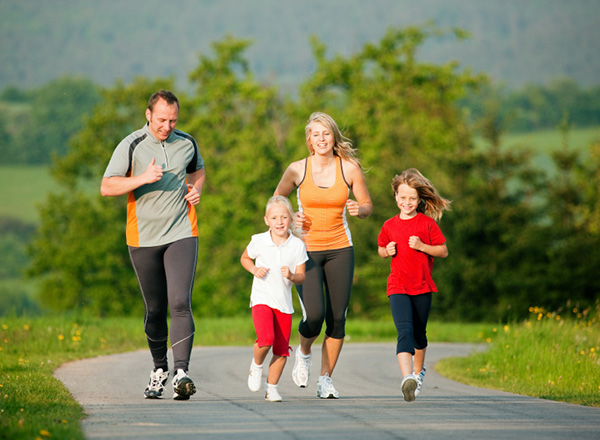You’ve probably heard countless times how exercise is “good for you.” But did you know that it can help you feel good too? Getting the right amount of exercise can rev up your energy levels and even help improve your mood.
What Are Some Benefits of Exercise?
Experts recommend that teens get 60 minutes or more of moderate to vigorous physical activity each day. Here are some reasons why:
- Exercise benefits every part of the body, including the mind. Exercise improves brain health and learning. It can help people sleep better. When you exercise, your body makes chemicals that help you feel good. Exercise lowers your chances of depression and decreases feelings of anxiety. Plus, exercise can give you a real sense of accomplishment and pride at having achieved a goal — like mastering a new dance routine or beating an old time in the 100-meter dash.
- Exercise helps people keep a healthy weight and lower their risk of some diseases. Exercising regularly can help prevent weight gain, type 2 diabetes, heart disease, and high blood pressure. Bone-strengthening exercise — like jumping, running, or lifting weights — can help keep bones strong.
- Exercise can help a person age well. This may not seem important now, but your body will thank you later. Regular exercise improves quality of life — the ability to enjoy things — as you get older. It can improve brain health and reduce the chance of getting Alzheimer’s (a brain disease that causes memory loss). Exercising can help prevent falls and injuries from falls.
Three parts of a balanced exercise routine include: aerobic exercise, strength training, and flexibility activities.
How Can I Get Aerobic Exercise?
Like other muscles, the heart enjoys a good workout. Aerobic exercise is any type of exercise that gets the heart pumping and gets you breathing harder. When you give your heart and lungs this kind of workout regularly, they get stronger and are better at getting oxygen (in the form of oxygen-carrying blood cells) to all parts of your body.
If you play team sports, you’re probably getting at least 60 minutes or more of moderate to vigorous activity on practice days. Some team sports that give you a great aerobic workout are basketball, soccer, lacrosse, hockey, and rowing.
But if you don’t play team sports, don’t worry — there are plenty of ways to get aerobic exercise. These include biking, running, swimming, dancing, in-line skating, tennis, cross-country skiing, hiking, and walking quickly.
What About Strength Training?
The heart isn’t the only muscle to benefit from regular exercise. The other muscles in your body enjoy exercise too. When you use your muscles, they become stronger.
Strong muscles are also a plus because they support your joints and help prevent injuries. Muscle-strengthening activities can also be bone-strengthening.
You don’t have to lift weights to make your muscles and bones stronger. Different types of exercise strengthen different muscle groups. For example:
- For arms, try rowing or cross-country skiing. Pull-ups and push-ups, those old gym class standbys, are also good for building arm muscles.
- For strong legs, try running, biking, rowing, or skating. Squats and leg raises also work the legs.
- For abdominal and core strength, you can’t beat rowing, yoga or pilates, and planks and crunches.
How Can I Build Flexibility?
Strengthening the heart, muscles, and bones isn’t the only important goal of exercise. Exercise can also help the body stay flexible, meaning that your muscles and joints stretch and bend easily.
Being flexible may also help improve a person’s sports performance. Some activities, like dance or martial arts, require great flexibility. But increased flexibility also can help people perform better at other sports, such as soccer or lacrosse.
Sports and activities that encourage flexibility are easy to find. Martial arts like karate, ballet, gymnastics, and yoga are good choices. Stretching after your workout will also help you improve your flexibility.
How Can I Keep It Going?
One of the biggest reasons people drop an exercise program is lack of interest: If what you’re doing isn’t fun, it’s hard to keep it up. But there are many different sports and activities to try to see which one inspires you. If you need a little more motivation, take a class, join a team, or find an exercise buddy to help keep you on track.
Talk to someone, like a coach or fitness expert at a gym, who can help you get started on a program that’s right for you and your level of fitness.
Everyone can benefit from moving more and sitting less, even those with disabilities or medical problems like asthma. If you have a health problem or other concern (like being out of shape), talk to your doctor before beginning an exercise plan.
Considering all the health benefits of being physically active, it’s easy to see why exercise is wise. And the great thing about exercise is that it’s never too late to start. Even small things can count as exercise — like taking a short bike ride, walking the dog, or raking leaves. If you are new to exercise, start with a few minutes a day and slowly build to the recommended amount of at least 60 minutes.
